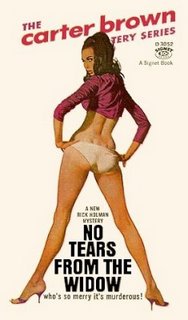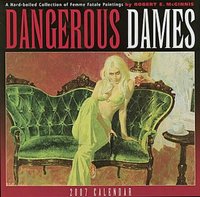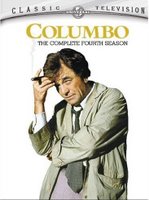Editor’s note: I actually wrote this short piece last year for my other blog, Limbo. But since most of you probably didn’t read it there, and since I don’t think I can outdo myself on this subject, I’ve decided to rerun the item here--of course, updating it slightly to match the number of birthdays this author would now be celebrating.
* * *

Today marks the 118th birthday of American detective-story writer
Raymond Chandler. Of course, the author himself died way back in 1959, not long after the publication of his seventh novel. But that shouldn’t stop us from celebrating this occasion. After all, Chandler was one of the foremost authors (not merely one of the foremost
mystery authors) of the 20th century. Without him, what we know today as the hard-boiled crime tale might be quite different--probably less literary in aim, if not always in execution. Chandler took the raw, realistic intrigue style that
Dashiell Hammett,
James M. Cain, and others had begun cooking up in post-World War I America, and gave it an artistic bent, filling his fiction with evocative metaphors and sentences that refuse to shed their cleverness with age (“It was a blonde. A blonde to make a bishop kick a hole in a stained glass window”; “She sat in front of her princess dresser trying to paint the suitcases out from under her eyes.”). Like Ernest Hemingway, Chandler had an idiosyncratic prose “voice” that is often imitated but rarely duplicated. “He wrote like a slumming angel and invested the sun-blinded streets of Los Angeles with a wonderful gusto and imaginative flair,” opined
Ross Macdonald, who was among those influenced by Chandler’s work, and who would go on--in novels such as
The Chill (1964) and
The Underground Man (1971)--to further elevate crime fiction’s reputation and increase its popularity.
Although he was born in Chicago in 1888, Raymond Thornton Chandler moved with his divorced mother, Florence, to England in 1895. After attending preparatory school in London, he studied international law in France and Germany before returning to Britain and embarking on a literary career that produced, early on, mostly book reviews and bad poetry. However, he did manage to publish 27 of his poems, as well as a short story called “The Rose-Leaf Romance,” before returning to the States in 1912. He then labored at a variety of jobs (including as a tennis-racket stringer and as the bookkeeper for a creamery in Los Angeles) until 1917, when he enlisted as a private in the Canadian Army and was sent to the French front lines during World War I. Discharged at Vancouver, Canada, in 1919, he moved back to L.A., and in 1924, wed Pearl Eugenie “Cissy” Pascal. Already twice married and divorced, she was also 18 years older than the future novelist, yet “was a lively, original, intelligent, mature, youthful-looking woman who seemed precisely right for a man of Chandler’s age and experience ...,” according to biographer Jerry Speir. By this time, Chandler was on the payroll of a Southern California oil syndicate, just as the oil industry around L.A. was starting to, well, gush. He originally signed on with that syndicate as a bookkeeper, but--despite his distaste for an industry he believed was dominated by corrupt opportunists--eventually rose to the position of vice president.
However, as business pressures intensified during the Depression, and Cissy’s health began to fail with age, Chandler commenced drinking heavily and engaging in affairs with office secretaries. In 1932, he was fired from his job with the oil syndicate. To ease the consequent drain on his savings, he turned back to fiction writing, and in 1933 saw his first short story published in
Black Mask, the most noteworthy of America’s cheap, mass-market “pulp magazines.” Speir explains:
It was an 18,000-word story called “Blackmailers Don’t Shoot” and caused the editorial staff to wonder if this unknown man were a genius or crazy. The story was so well polished that not a phrase could be cut, thus the praise for his “genius.” But in his compulsive drive for perfection, [Chandler] had also tried to “justify” the right margin, as printers say. He had tried to make the typed page appear with even margins on both the left and right, like a printed page--thus the concern for his possible “craziness.”
Chandler relished mystery writing because it seemed to lack pretension, and the pulps’ restrictions on word length and subject matter compelled him to master the art of storytelling. Never a past master of plotting, Chandler found his own strengths instead in creating emotion through description and dialogue, and in presenting a prose idiom that melded the precision of his prep-school English with the vigor of American vernacular speech.

His first novel,
The Big Sleep (which he wrote in three months), hit bookstores in 1939 and introduced the character who would come to be synonymous with, and long outlive, his creator: wisecracking, chess-playing, late-30s L.A. private eye
Philip Marlowe. Marlowe embodied the author’s conception (spelled out in his classic 1944 essay, “
The Simple Art of Murder”) of the gumshoe as “a complete man and a common man and yet an unusual man. He must be, to use a rather weathered phrase, a man of honor--by instinct, by inevitability, without thought of it and certainly without saying it. He must be the best man in his world and good enough for any world. I do not care much about his private life; he is neither a eunuch nor a satyr; I think he might seduce a duchess and I am quite sure he would not spoil a virgin; if he is a man of honor in one thing, he is that in all things.”
Chandler hadn’t intended to write mysteries for the rest of his life, but that’s exactly what he did. Thank goodness. After
Sleep, he penned six more Marlowe adventures, including what are arguably his finest two:
Farewell, My Lovely (1940) and
The Long Goodbye (1953). He also took a turn in the early ’40s as a Hollywood scriptwriter, contributing to such films as
Double Indemnity (1943) and writing
The Blue Dahlia (1946), the screenplay of which received an Oscar nomination, before he soured on the whole enterprise. (He later worked with Alfred Hitchcock on a movie adaptation of
Patricia Highsmith’s
Strangers on a Train; but the renowned director was apparently not fond of the results, and replaced Chandler.) In 1954, just a year after
The Long Goodbye was published, Cissy died from fibrosis of the lungs, sending her then 66-year-old husband into a “long nightmare” of mourning that left him with severe depression and resulted in at least one suicide attempt. Biographers like Frank McShane (
The Life of Raymond Chandler, 1976) have remarked on the mixture in Chandler’s stories of toughness and sentimentality, and how “the emotional sensitivity that made [Chandler’s] literary achievement possible also made him miserable as a human being.” That miserableness was much in evidence during the last five years of Chandler’s life. He survived it, in part, through the ministrations of Helga Greene, his London literary agent and friend (and, in the months prior to his death, his fiancée), and went on to compose
Playback, which was based on a screenplay he’d written in 1947. That novel reached bookstore shelves just 16 months before he passed away on March 26, 1959.
When Raymond Chandler died, he left behind an unfinished manuscript titled
The Poodle Springs Story, which
Robert B. Parker (a novelist who shows distinctive Chandlerian influences in his own novels,

featuring a Boston P.I. named Spenser) would complete and see published, as simply
Poodle Springs, in 1989. The author left in his wake, too, a stylistic legacy that has inspired successive generations of detective novelists; without Chandler (along with Hammett and Macdonald) having shown them the way, people such as Parker,
Michael Connelly,
Timothy Harris, Arthur Lyons,
Max Allan Collins,
Robert Crais, Walter Mosley,
Sara Paretsky, Paco Ignacio Taibo II, and
Loren D. Estleman might never have found their way into writing crime fiction. The success of movies made from Chandler’s stories (especially Humphrey Bogart’s 1946
The Big Sleep and James Garner’s
Marlowe, a 1969 flick based on
The Little Sister), as well as radio shows, television series, and even comic books
based on his work makes us forget that he only ever published seven novels and 24 short stories during his lifetime.
The impact of his legacy has far exceeded the limits of his artistic fabrication. He gave the world an indelible image of mid-20th-century Los Angeles as a city where lawlessness and luxury were old drinking buddies, and trust was a rare commodity--a rather different place from what Chandler himself had encountered during his first, pre-World War I foray to Southern California. (In
The Little Sister, he has Marlowe say, “I used to like this town. A long time ago. ... [It] was just a big dry sunny place with ugly homes and no style, but goodhearted and peaceful.”) This author also bequeathed us an archetype of the fictional private eye as a tired latter-day knight who, though he has traded his helmet for a fedora, still knows how to rescue a damsel in distress. That archetype has been altered in the decades since Chandler’s demise, but its shadow can still be seen behind many of the crime-novel protagonists working today.
As McShane put it in his introduction to the wonderful 1988 anthology,
Raymond Chandler’s Philip Marlowe: A Centennial Celebration, “Chandler was a real artist. He created a character who has become a part of American folk mythology, and in writing about Los Angeles, he depicted a world of great beauty and seamy corruption--the American reality. He made words dance, and readers continue to respond to his magic.”
So, on the occasion of the man’s 118th birthday, let us drink a toast to Raymond Chandler: an unusual man, but one of the best writers in his own world and good enough for any world.
READ MORE: “
Raymond Chandler: An Appreciation,” by George Pelecanos (
Your Flesh Magazine); “
45 Calibrations of Raymond Chandler,” by Peter Straub.






































